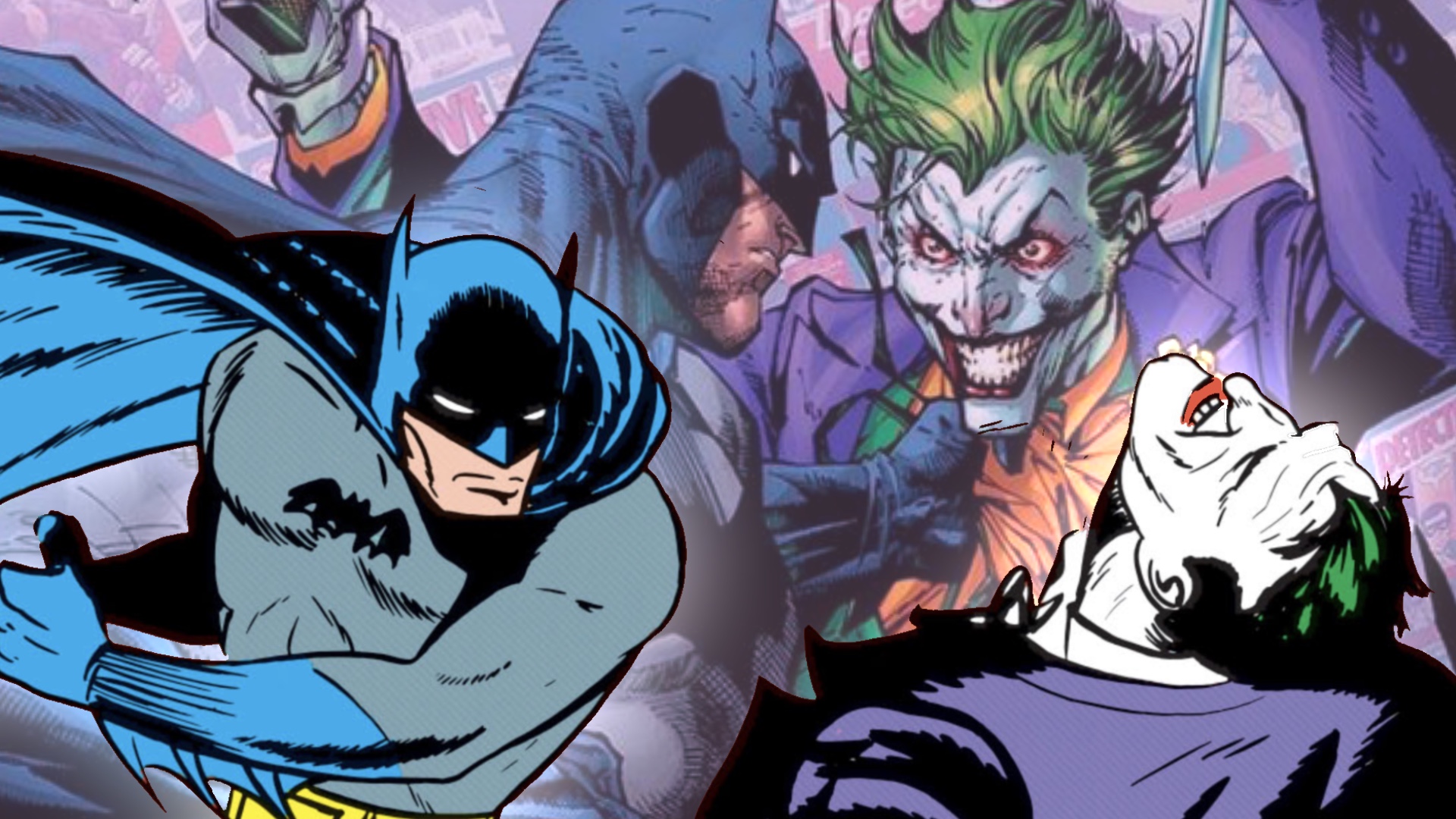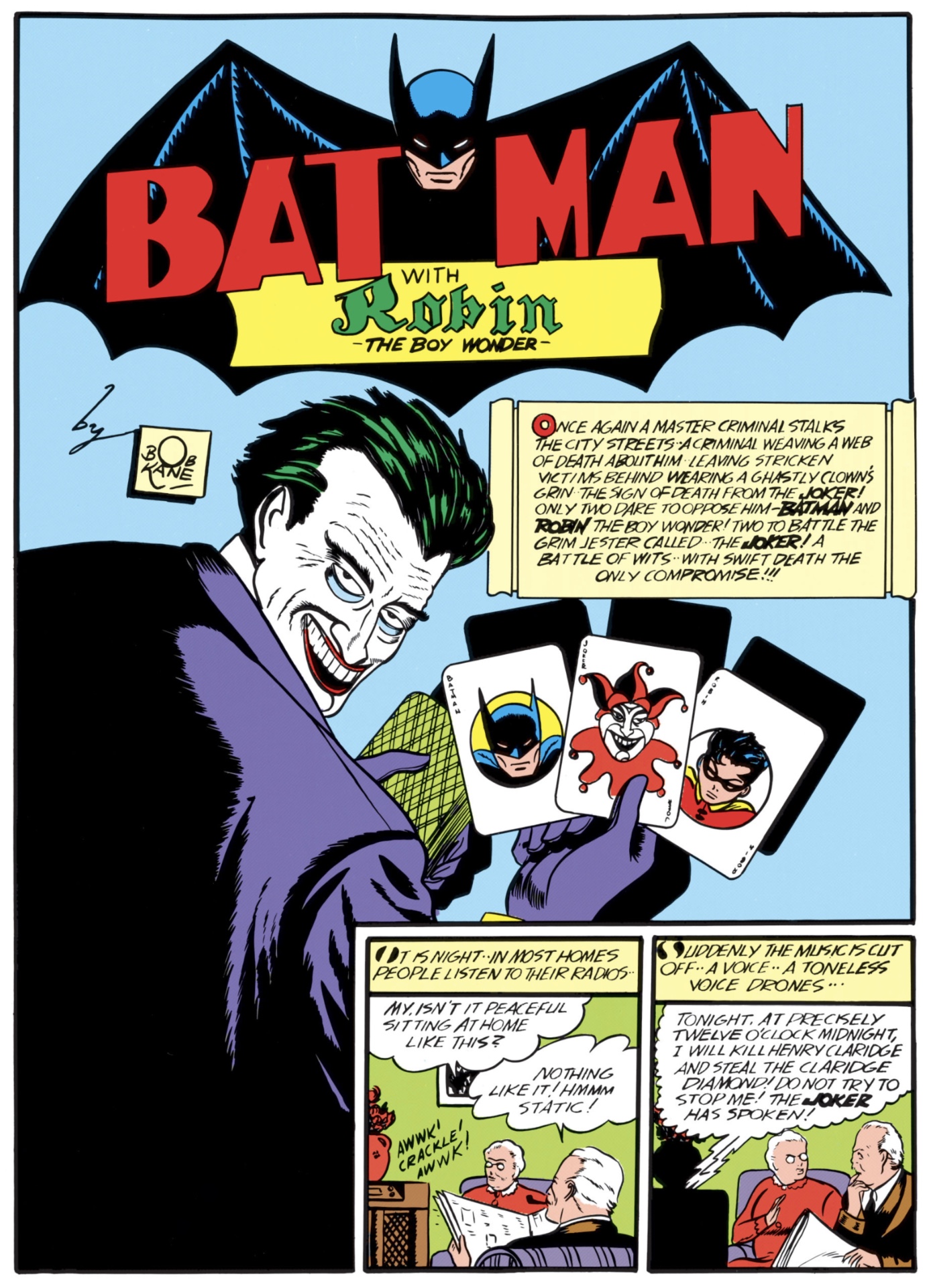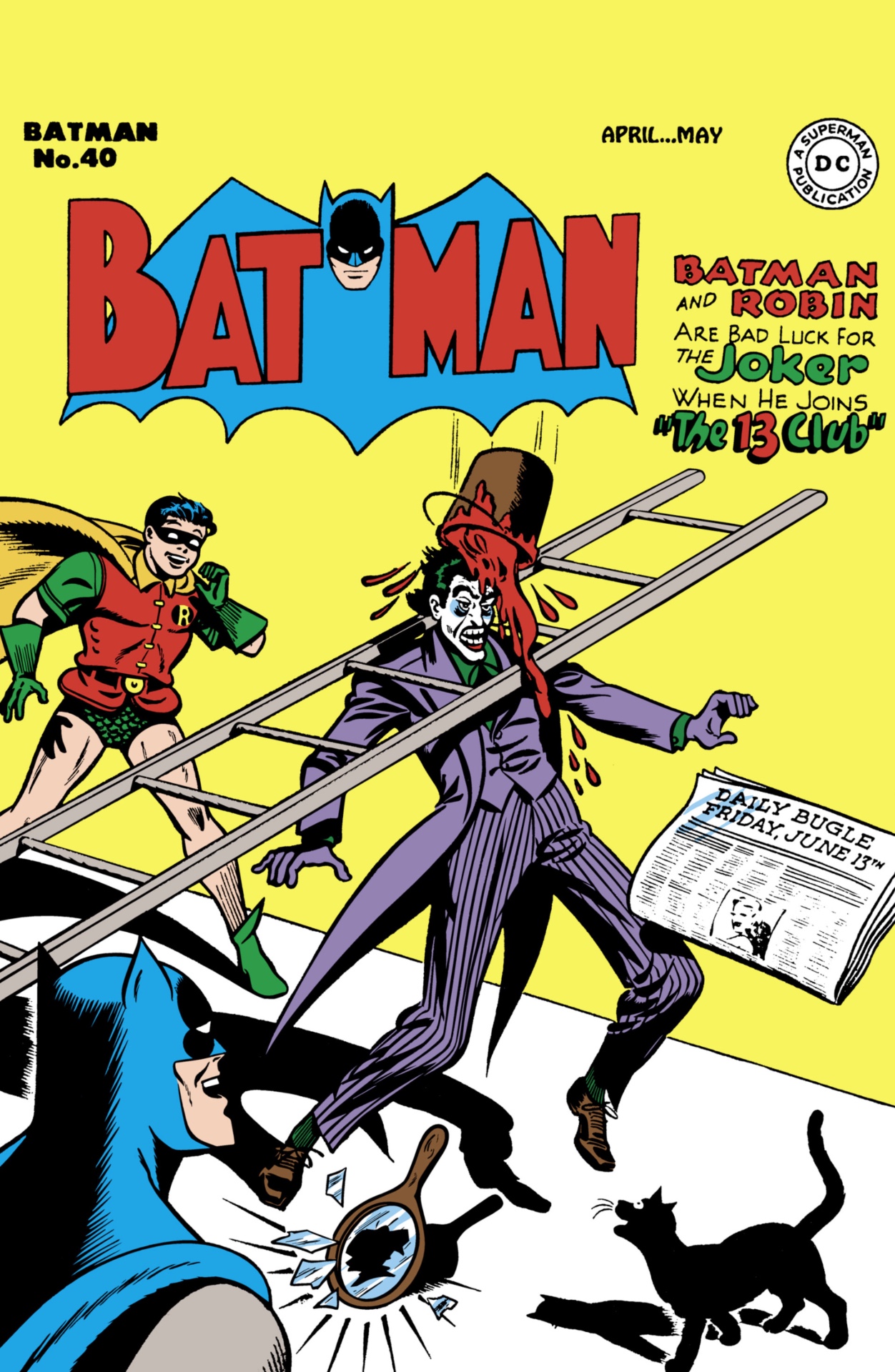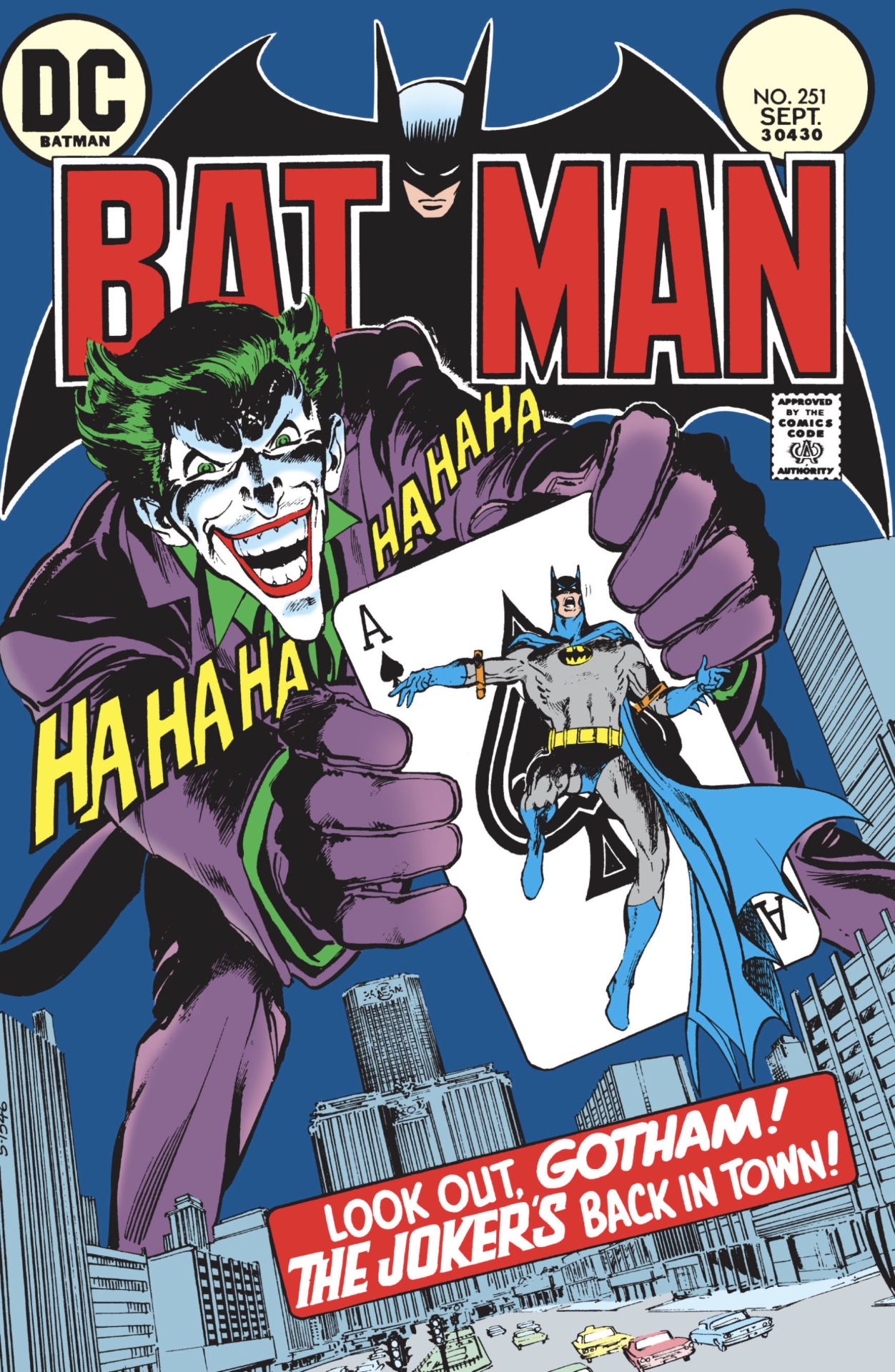How did Batman and the Joker become arch-enemies?
The Joker is Batman's arch-enemy, but how did it start?

The Joker is arguably Batman's greatest foe, his arch-enemy and opposite number - the chaos to his order. And believe it or not, it's been that way almost since the first time Joker appeared in 1940's Batman #1.
Created by Bob Kane, Jerry Robinson, and Bill Finger, the Joker was Batman's first official supervillain (though he had previously fought the Mad Monk, a vampire who wasn't considered a traditional supervillain at the time). Interestingly though, the Joker wasn't intended to stick around past that first appearance, seemingly dying in the initial version of the story.

However, editor Whitney Ellsworth, who saw potential in the character to be a true nemesis for Batman, intervened to change the ending so the Joker would survive, through the addition of a new panel at the end of the story showing that he had escaped his apparent fate.
The Joker then went on to appear numerous times in the Golden Age up through the early '50s, becoming Batman's number one arch-enemy not by chance, but by design of the creators of those stories.
Still, even with Joker's relationship with Batman already cemented almost from the first moment he was introduced, his characterization still didn't quite reflect the modern version of the Joker.
Back in the Golden Age, Joker was much more cunning and ruthless than some of his later incarnations. Rather than being a cackling Clown Prince of Crime, he was much more like Heath Ledger's Joker in 2008's The Dark Knight, killing civilians and causing disasters such as train derailments.
But over time, those darker elements fell out of favor not just for the character of the Joker, but for superhero comics overall, and by the mid-'40s, Joker was becoming more of a prankster, adding in more clownish, even funny aspects to his crimes, which became much less brutal.
Get the best comic news, insights, opinions, analysis and more!

By the '50s, Joker was fully committed to his bit of being a silly prankster whose crimes were more like elaborate jokes on Batman and Robin, thanks in part to the rise of the Comics Code Authority, which dictated the kind of content that could be shown in American comic books in order to keep them aimed at children according to the stringent standards of the day.
Throughout that time, Joker remained one of Batman's most consistent foes, even as the Caped Crusader's rogues gallery grew to include more gimmicky, goofy villains. Joker maintained a bit of an edge over some other Silver Age villains of the late '50s and '60s by introducing some of his best known weapons such as acid-spitting flowers, trick joy buzzers, and other thematic weapons that had a more lethal component.
However, by the mid-'60s, the Joker was appearing less and less thanks to the gradual return of superhero comics to slightly more serious fare, until 1966's Adam West and Burt Ward starring Batman show brought him back into the fold as one of the series' primary villains.
The campiness of Batman '66 (as the show is colloquially known) lent itself to Joker's comedic, absurdist nature, with actor Cesar Romero providing a blueprint for the madcap nature of many of the Joker's later live action portrayals. But in 1969, the Batman show ended, and Joker once again disappeared from comics - this time going almost four years between appearances.
When Joker re-appeared in 1973's Batman #251 for the now legendary story 'Joker's Five Way Revenge,' writer Denny O'Neil and artist Neal Adams finally brought together Joker's semi-silly Clown Prince of Crime incarnation with his original Golden Age characterization as a violent mastermind.

Starting with 'Joker's Five Way Revenge,' the Joker went from being either a dark, foreboding murderer or a goofy prankster to a villain who split the difference with threatening, thematic crimes that confounded Batman's status as the world's greatest detective while also standing in stark contrast to the Dark Knight's intensely self-serious demeanor.
This era also introduced the concept of Arkham Asylum, sealing the final piece of Joker's modern characterization as a villain who is so criminally insane, he doesn't get sent to a normal prison no matter how messed up his crimes become, and whose reemergence in Batman's life is anything but business as usual.
Since the Bronze Age of the mid-'70s, Joker has been one of DC's primary villains, even outside of Batman's own mythos, with every appearance cementing further the fact that no matter how capable Batman might be, the Joker will always be able to perplex and menace him out of his comfort zone.
The relationship between Batman and the Joker has held true even outside of comics, into the 1989 Batman film, the aforementioned Dark Knight, and numerous other adaptations. Batman: The Animated Series, games such as the Arkham series, and dozens of Elseworlds-style alt-reality stories show that Batman and Joker's rivalry is not just part of the core DC Universe, it's almost a constant across the entire Multiverse.

Now, as part of 'Dawn of DC,' the publisher will revisit the first meeting of the Joker and Batman, retelling the story in the core DCU for one of the first times since the original Batman #1 in 1940 in the new Batman: The Brave and the Bold title.
How will this new telling of the story affect the relationship between Batman and Joker? Knowing the modern DCU, the retold story is likely to introduce some new complications to the flashback tale which could enter modern continuity.
But one thing's for sure - no matter what happens, as long as there are a Batman and a Joker, they will almost certainly be the direst of enemies.
Read the best Batman vs. Joker stories of all time.
I've been Newsarama's resident Marvel Comics expert and general comic book historian since 2011. I've also been the on-site reporter at most major comic conventions such as Comic-Con International: San Diego, New York Comic Con, and C2E2. Outside of comic journalism, I am the artist of many weird pictures, and the guitarist of many heavy riffs. (They/Them)



